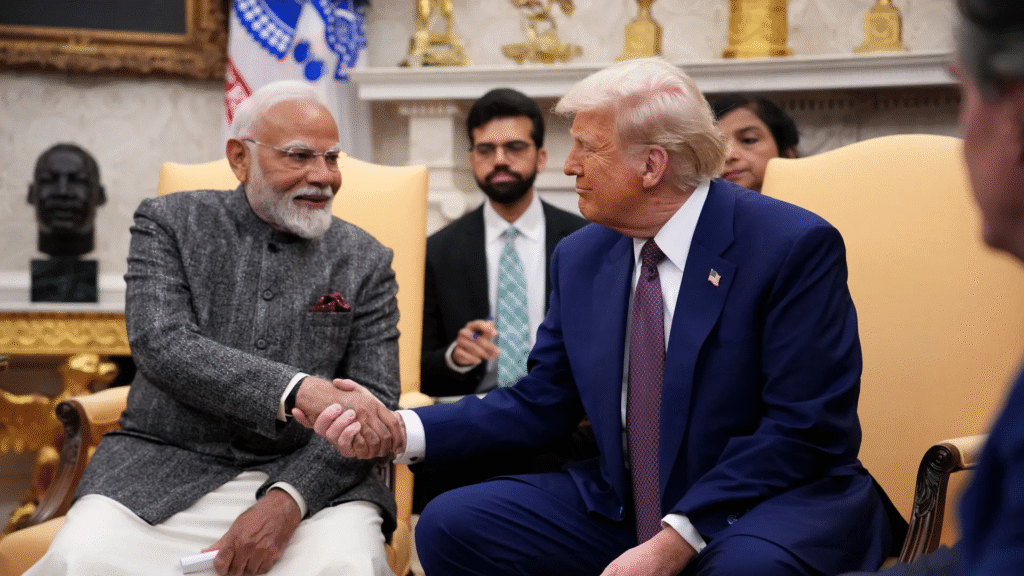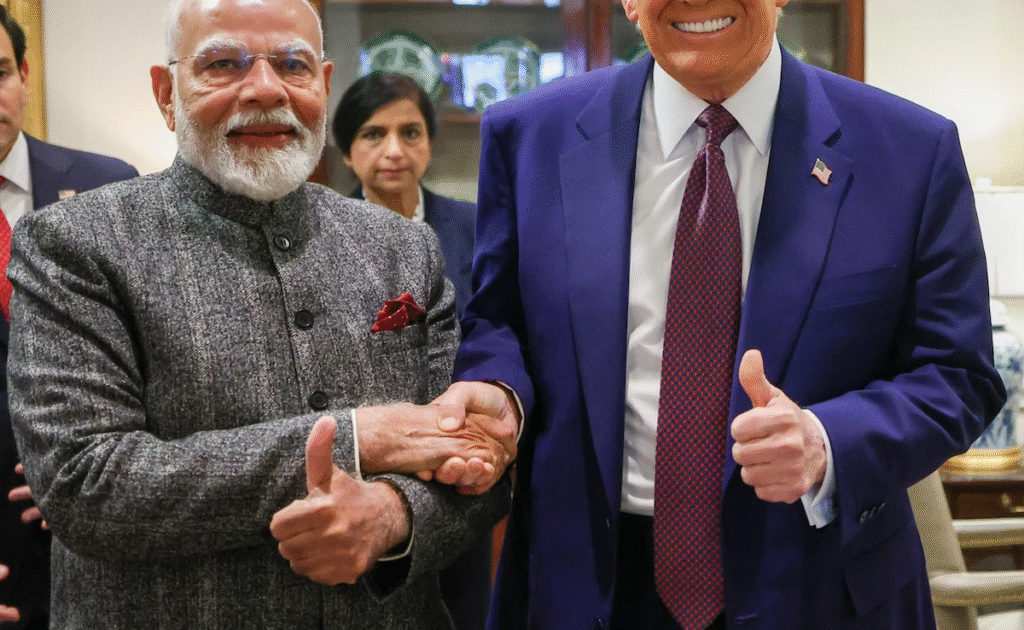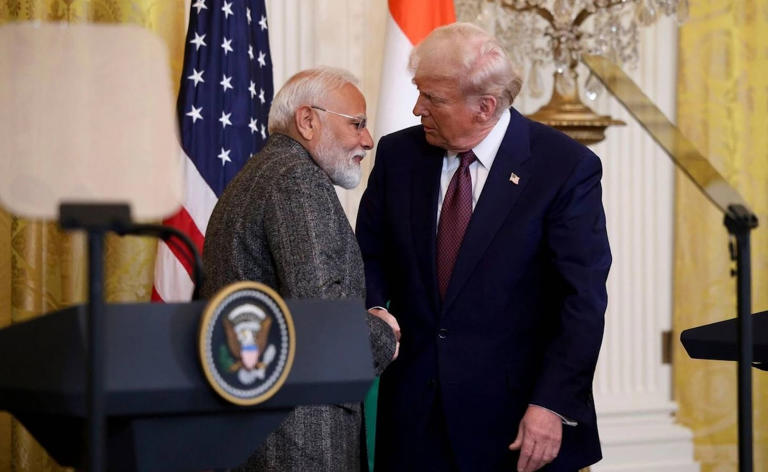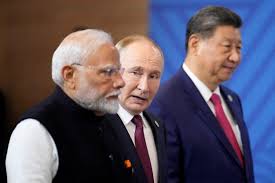Trump Hints at 20–25% Tariff on Indian Goods — Final Decision Pending | US-India Trade Tensions Escalate
Donald Trump suggests a possible 20% to 25% tariff on Indian goods if re-elected, but says the decision is not yet final. Tensions rise as US-India trade relations face renewed uncertainty ahead of the 2025 elections
President Donald Trump said that India may be hit with a tariff rate of 20% to 25%, while cautioning that the final levy still hadn’t been finalized as the nations negotiate a trade deal ahead of an Aug. 1 deadline.
“I think so,” Trump told reporters Tuesday when asked if that was a possible tariff rate for New Delhi.
“India has been a good friend, but India has charged basically more tariffs than almost any other country,” Trump said aboard Air Force One as he returned to Washington from a five-day visit to Scotland. “You just can’t do that.”
The Indian rupee extended a three-day decline on the tariff threat, while the BSE Sensex gave up early gains to trade flat. The local currency fell as much as 0.5% to 87.24 to the dollar.
Any rate 20% or higher would come as a disappointment for India, which had been seeking a better deal than the 19% that Trump offered Indonesia and the Philippines. Bloomberg reported earlier this month that the US and India were working toward an agreement that would reduce proposed tariffs to below 20%, even as Prime Minister Narendra Modi’s administration resisted demands to open up the agricultural and dairy sectors.

India and the US have already signed terms of reference for a bilateral trade deal and have agreed to a fall deadline for that. The two sides have been negotiating an interim agreement that New Delhi hoped would give it a reprieve from higher US import duties due to kick in on Friday.
Officials in India are still awaiting word from the White House on the extent of tariffs the South Asian nation will face this week, an official told reporters in New Delhi earlier this week, asking not to be identified as the discussions are private. An interim deal remains unlikely for now, but India is optimistic about reaching a trade agreement by fall, the official added.
India and the US have held five rounds of talks so far and a trade team from Washington is expected to visit New Delhi by mid-August, the person said.
India’s Ministry of Commerce and Industry didn’t respond to an email seeking comments on Wednesday.
Relations with the US have hit some turbulence in recent months. Trump’s insistence that his trade threats prompted India and Pakistan to reach a ceasefire in April incensed officials in New Delhi, and the US president has also threatened “secondary tariffs” on India, China and other buyers of Russian oil if President Vladimir Putin doesn’t end hostilities with Ukraine.
US Trade Representative Jamieson Greer said Monday that the US needed more time for talks with India to gauge the country’s willingness to open its market more to American exports. Reuters reported earlier Tuesday that New Delhi is bracing for higher tariffs likely between 20% and 25%.
India has conveyed to the Trump administration the red lines it won’t breach in finalizing an agreement, Bloomberg reported earlier this month, citing officials familiar with the matter. New Delhi won’t allow the US to export genetically modified crops to the country, and is unwilling to open widely its dairy and automobile sectors, the people said, asking not to be identified because the discussions are private.
India has expressed willingness to offer zero tariffs on some goods such as auto components and pharmaceuticals.
Modi’s government has taken a more cautious stance as it faces pressure to protect India’s politically sensitive farm sector. Millions depend on agriculture for their livelihoods and farmers form a key voting bloc for Modi’s party, which faces a crucial state election in the coming months.

The president was commenting ahead of an Aug. 1 deadline when a slew of so-called reciprocal tariffs are set to take effect on dozens of trading partners. Trump announced higher levies in April, before pausing those tariffs at a reduced 10% rate to allow time for negotiations. Despite an extended deadline, Trump has only secured a handful of deals.








